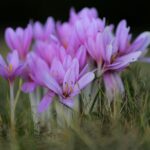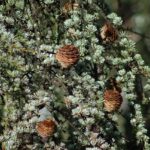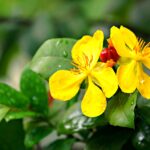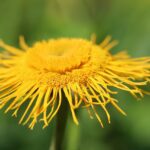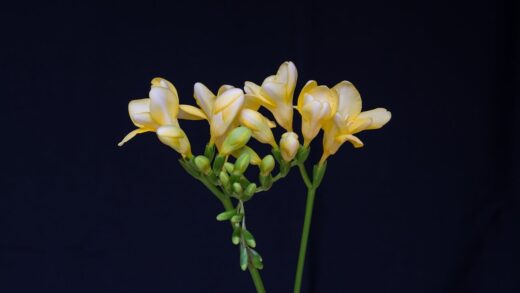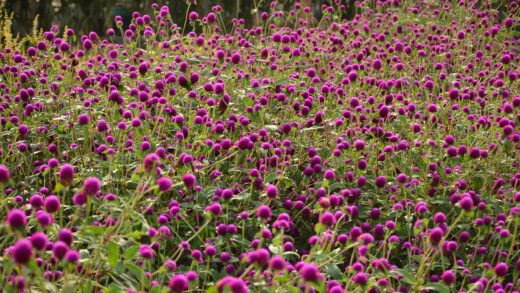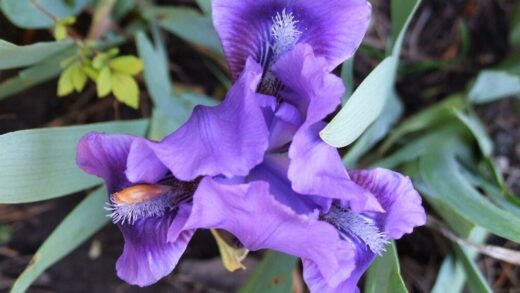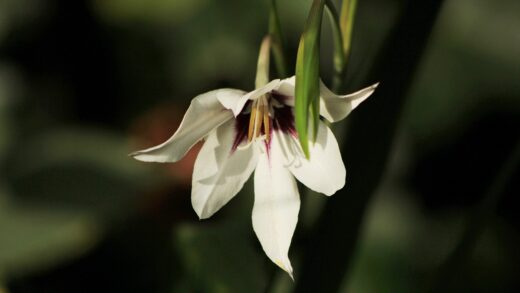Providing proper care for the sweet chestnut is a long-term commitment that yields significant rewards, from its beautiful summer canopy to the delicious nuts it produces in autumn. This majestic tree, with its impressive stature and longevity, requires a thoughtful approach to cultivation, encompassing everything from site selection to ongoing maintenance throughout its life. Successful cultivation hinges on understanding the tree’s fundamental needs for soil, water, and light, and how these factors interact to promote vigorous growth and bountiful harvests. A well-cared-for sweet chestnut not only enhances the landscape but can become a legacy for future generations to enjoy, making the initial and continued investment in its health truly worthwhile.
Understanding the basics of sweet chestnut vitality
The foundation of sweet chestnut care lies in recognizing its natural habitat and replicating those conditions as closely as possible. These trees thrive in well-drained, slightly acidic soils and have a low tolerance for lime or chalky conditions, which can lead to nutrient deficiencies and poor growth. Before even considering planting, a thorough soil analysis is recommended to determine the pH and composition, allowing for any necessary amendments. Understanding these initial requirements is crucial, as correcting a poor site choice later on is significantly more difficult and often less effective. Ultimately, the tree’s ability to absorb water and nutrients is directly tied to the soil it lives in.
A key aspect of the tree’s vitality is its need for ample space, both above and below ground. The sweet chestnut develops an extensive root system that spreads wide in search of moisture and stability, so it should be planted far from buildings, underground pipes, or paved surfaces. Similarly, its canopy will grow to be broad and dense, requiring a location where it will not be crowded by other trees or structures, which could impede airflow and sunlight penetration. This spatial planning prevents future conflicts and ensures the tree can reach its full, magnificent potential without interference. Proper spacing also plays a vital role in disease prevention.
The tree’s life cycle also dictates its care regimen. Young, newly planted trees require more attention, particularly regarding watering and protection from pests and extreme weather, to help them establish a strong root system. As the tree matures, its needs shift towards structural pruning, managing nutrient levels to support nut production, and monitoring for age-related health issues. This long-term perspective is essential; the care provided in the early years directly impacts the health, productivity, and lifespan of the mature tree. A proactive approach is always superior to a reactive one.
Finally, recognizing the importance of cross-pollination is fundamental for nut production. While a single sweet chestnut tree will grow beautifully, it is often not self-fertile, or at least produces a much smaller crop on its own. To ensure a reliable and abundant harvest, it is necessary to plant at least two different compatible cultivars within a reasonable distance of each other. This facilitates the transfer of pollen by wind, which is the primary method of pollination for this species. This consideration is purely for fruiting, as the tree’s ornamental value is not dependent on pollination.
More articles on this topic
Soil management and nutrition
Maintaining optimal soil conditions is an ongoing task that is central to the health of a sweet chestnut tree. The ideal soil pH is between 5.5 and 6.5, and regular testing every few years can help monitor this level. If the soil is too alkaline, elemental sulfur can be incorporated to gently lower the pH over time, while acidic soils can be amended with dolomitic lime if needed, though this is less common for chestnuts. Beyond pH, soil structure is equally important; incorporating well-rotted compost or other organic matter annually can improve drainage in heavy clay soils and enhance water retention in sandy soils. This practice also encourages a healthy soil microbiome, which is essential for nutrient cycling.
Fertilization should be approached with care, as sweet chestnuts are not heavy feeders, and excessive nitrogen can promote weak, leafy growth at the expense of nut production and disease resistance. A balanced fertilizer with a higher proportion of phosphorus and potassium is generally recommended, especially for mature, fruit-bearing trees. The best time to apply granular fertilizer is in the early spring, just as new growth begins, spreading it evenly around the tree’s dripline, not against the trunk. For a more organic approach, a top-dressing of compost, leaf mold, or well-rotted manure provides a slow release of essential nutrients throughout the growing season.
Mulching is a simple yet highly effective practice in sweet chestnut care that serves multiple purposes. A thick layer of organic mulch, such as wood chips, bark, or straw, spread around the base of the tree helps to conserve soil moisture by reducing evaporation, which is especially beneficial during dry periods. It also suppresses weed growth, reducing competition for water and nutrients, and insulates the soil, protecting the roots from extreme temperature fluctuations in both summer and winter. As the organic mulch decomposes, it further enriches the soil, contributing to its structure and fertility over time.
Observing the tree’s foliage can provide valuable clues about its nutritional status. Yellowing leaves, or chlorosis, particularly between the veins, can indicate a deficiency in essential micronutrients like iron or manganese, often triggered by high soil pH locking up these elements. Other signs, such as stunted growth, sparse foliage, or poor nut development, can also point to nutritional imbalances. Addressing these issues may require specific soil amendments or the application of foliar sprays containing the deficient nutrients. Regular observation allows for timely intervention before a minor issue becomes a major health problem for the tree.
More articles on this topic
Watering and moisture control
Proper watering practices are critical, especially during the tree’s formative years. Young sweet chestnut trees have not yet developed the deep, extensive root systems of their mature counterparts and are therefore more vulnerable to drought stress. For the first few years after planting, they require consistent and deep watering, particularly during prolonged dry spells in the summer. The goal is to moisten the entire root zone, not just the surface, which encourages roots to grow deeper into the soil where moisture is more reliable. A general guideline is to provide a thorough soaking once a week in the absence of significant rainfall.
As the tree matures, its water needs change. An established sweet chestnut with a well-developed root system is remarkably drought-tolerant and can often manage with natural rainfall in many climates. However, even mature trees can benefit from supplemental irrigation during periods of extreme heat and drought, especially during the critical nut development phase in late summer. Water stress at this time can lead to smaller nuts, or even cause the tree to drop its nuts prematurely. Monitoring soil moisture levels, rather than watering on a fixed schedule, is the most effective approach.
The method of water application is just as important as the frequency. Drip irrigation or soaker hoses are highly efficient methods as they deliver water slowly and directly to the root zone, minimizing wastage through evaporation or runoff. Overhead sprinklers are less ideal because they can wet the foliage, which, in humid conditions, can create a favorable environment for fungal diseases like leaf spot or powdery mildew. If sprinklers are the only option, it is best to water early in the morning so that the leaves have ample time to dry before evening.
Effective moisture control also involves managing drainage. Sweet chestnuts are highly intolerant of waterlogged soil, which can deprive the roots of oxygen and lead to root rot, a serious and often fatal condition. When selecting a planting site, it is imperative to choose a location with good natural drainage, such as a gentle slope. In areas with heavy clay soil, amending the soil with organic matter can improve its structure and drainage, but creating raised beds or mounds for planting can provide an even more reliable solution to prevent the tree’s roots from sitting in stagnant water.
Pruning for health and productivity
Pruning is a vital maintenance practice that shapes the tree’s structure, promotes its health, and can enhance nut production. The primary goal of pruning a young sweet chestnut is to establish a strong central leader and a well-spaced framework of scaffold branches. This structural pruning, performed during the dormant winter season, prevents the development of weak, narrow-angled crotches that are prone to splitting later under the weight of nuts or snow. Removing crossing or rubbing branches also improves air circulation through the canopy, which is key to reducing the incidence of fungal diseases.
For mature, nut-producing trees, the focus of pruning shifts from structural development to maintenance. This involves the removal of any dead, damaged, or diseased wood, which can be done at any time of year. Additionally, selectively thinning the canopy can improve sunlight penetration to the lower branches, which encourages more even nut development throughout the tree. It is important to avoid excessive pruning on a mature tree, as this can stimulate a flush of non-productive vegetative growth, known as water sprouts, and can also create entry points for pests and diseases.
The timing of pruning is crucial for the tree’s health. Major structural pruning should always be conducted during the dormant period, typically in late winter or early spring before the sap begins to flow. Pruning during this time minimizes stress on the tree and reduces the risk of sap “bleeding” from the cuts. It also makes the tree’s structure more visible without the obstruction of leaves, allowing for more precise and thoughtful cuts. Summer pruning should be limited to the removal of small, unwanted shoots or suckers from the base of the tree.
Proper pruning technique is essential to ensure clean cuts that heal quickly. Always use sharp, clean tools, such as pruning saws or loppers, to avoid tearing the bark or crushing the wood. Cuts should be made just outside the branch collar, the slightly swollen area where the branch joins the trunk or a larger limb. This collar contains specialized cells that will heal over the wound. Leaving a stub can lead to decay, while cutting flush with the trunk creates a larger wound that is slower to heal and more susceptible to infection.
Pest and disease management
A proactive approach to pest and disease management is far more effective than trying to remedy a widespread infestation or infection. The cornerstone of this approach is maintaining a healthy, vigorous tree, as strong trees are naturally more resistant to problems. This includes ensuring proper soil conditions, adequate watering, and appropriate fertilization, as a stressed tree is a primary target for many pests and pathogens. Regular monitoring of the tree allows for the early detection of any issues, enabling intervention before they become severe.
One of the most significant threats to sweet chestnut trees is chestnut blight, a devastating fungal disease caused by Cryphonectria parasitica. This disease enters the tree through wounds in the bark and forms cankers that can eventually girdle and kill branches or even the entire tree. While highly resistant hybrid varieties are now available, for older cultivars, prevention is key. This involves avoiding unnecessary wounds to the bark from machinery or improper pruning and immediately treating any cankers that do appear by surgically removing the infected tissue.
Another serious issue is ink disease, a root rot caused by the water mold Phytophthora. This disease thrives in poorly drained, waterlogged soils and causes the roots to blacken and die, leading to a general decline in the tree’s health, characterized by yellowing leaves and dieback. The name comes from the black, inky substance that can sometimes ooze from the base of the trunk. The best defense against ink disease is prevention through proper site selection and ensuring excellent soil drainage. Once a tree is severely infected, it is very difficult to save.
Among insect pests, the Oriental chestnut gall wasp (Dryocosmus kuriphilus) is a major concern in many regions. This small insect lays its eggs in the tree’s buds, causing the formation of galls on the leaves and shoots, which can significantly reduce shoot growth and nut production. Biological control, using a specific parasitoid wasp that preys on the gall wasp, has proven to be the most effective and environmentally sound method of managing this pest. Other, less severe pests like aphids or spider mites can occasionally appear but are often kept in check by natural predators in a healthy ecosystem.
Harvesting and storing the nuts
Knowing when to harvest sweet chestnuts is key to enjoying their best flavor and quality. The nuts are ready when the spiny burrs that enclose them begin to open and fall from the tree, which typically occurs from late September through October. It is best to wait for the nuts to drop naturally rather than trying to knock them from the branches, as this ensures they are fully mature. Wearing thick gloves is essential when gathering the nuts to protect your hands from the sharp, prickly burrs.
Once the burrs have fallen, the harvest should be collected promptly, ideally on a daily basis. Leaving the nuts on the damp ground for extended periods can encourage mold growth and attract wildlife, such as squirrels and deer, who also relish them. After collection, the nuts must be separated from the burrs. The burrs will often split open on their own, making extraction easy, but some may require a gentle press with a sturdy shoe to open them and release the glossy brown nuts inside.
Proper curing and storage are crucial for extending the usability of the harvest. Freshly harvested chestnuts have a high moisture content and need to be cured to develop their characteristic sweet flavor and to improve their storage life. To cure them, spread the nuts in a single layer in a cool, dry, well-ventilated area for several days. This process allows some of the starch in the nuts to convert to sugar, enhancing their taste. Any nuts that show signs of mold or insect damage should be discarded immediately.
For long-term storage, cured chestnuts can be kept in a few different ways. For short-term use, they can be placed in a perforated bag and stored in the crisper drawer of a refrigerator for several weeks. For longer preservation, they can be frozen, either shelled or unshelled, where they will last for many months. Another traditional method is to dry the nuts completely, after which they can be stored in a cool, dark place for a year or more and rehydrated before use, or ground into a versatile flour.







